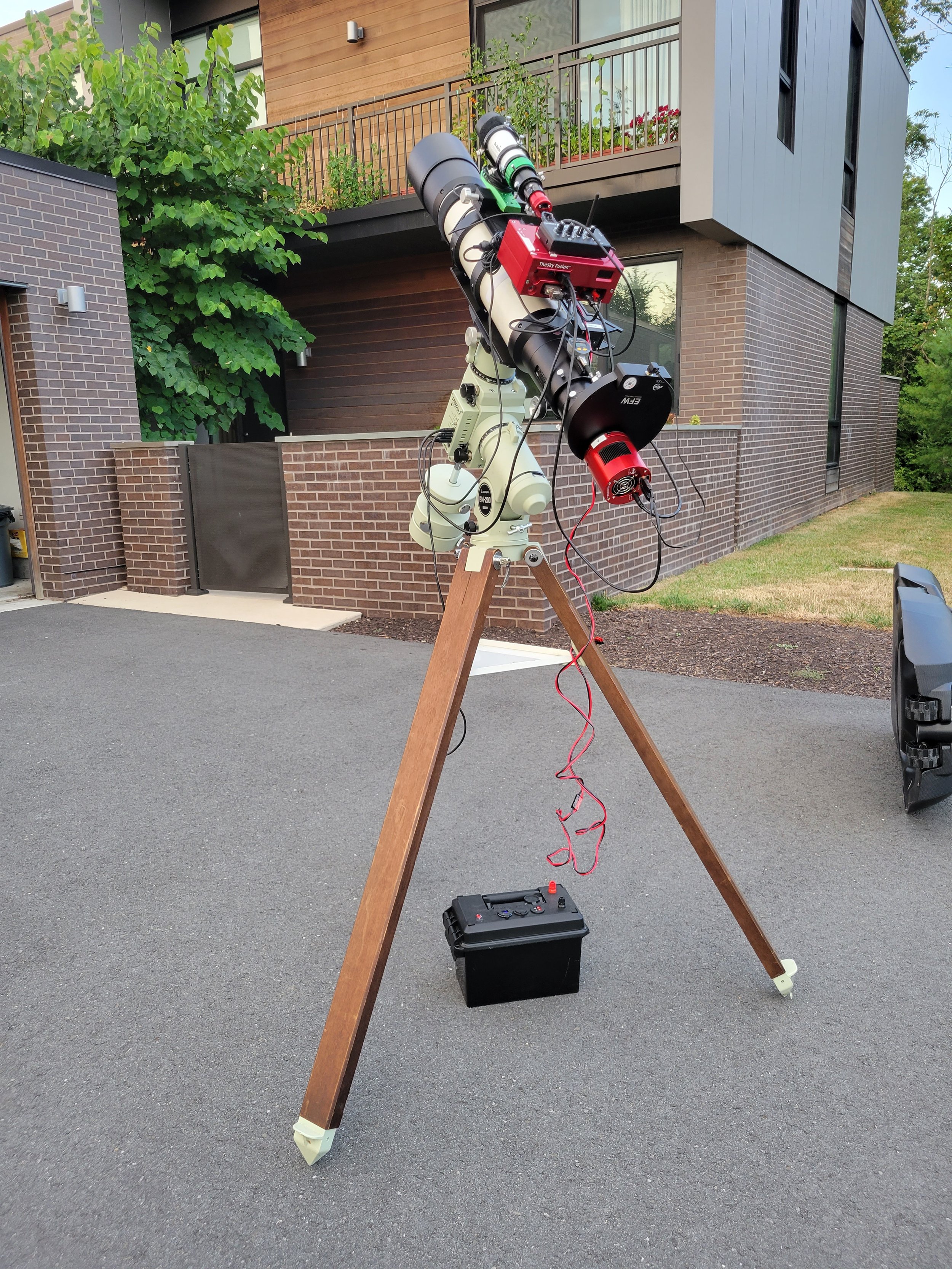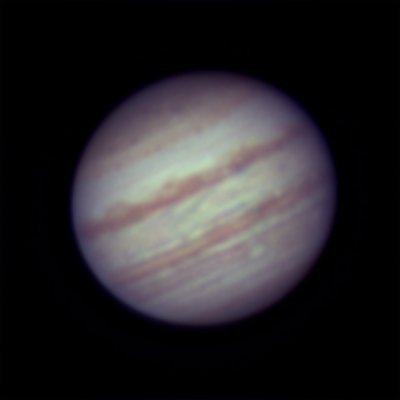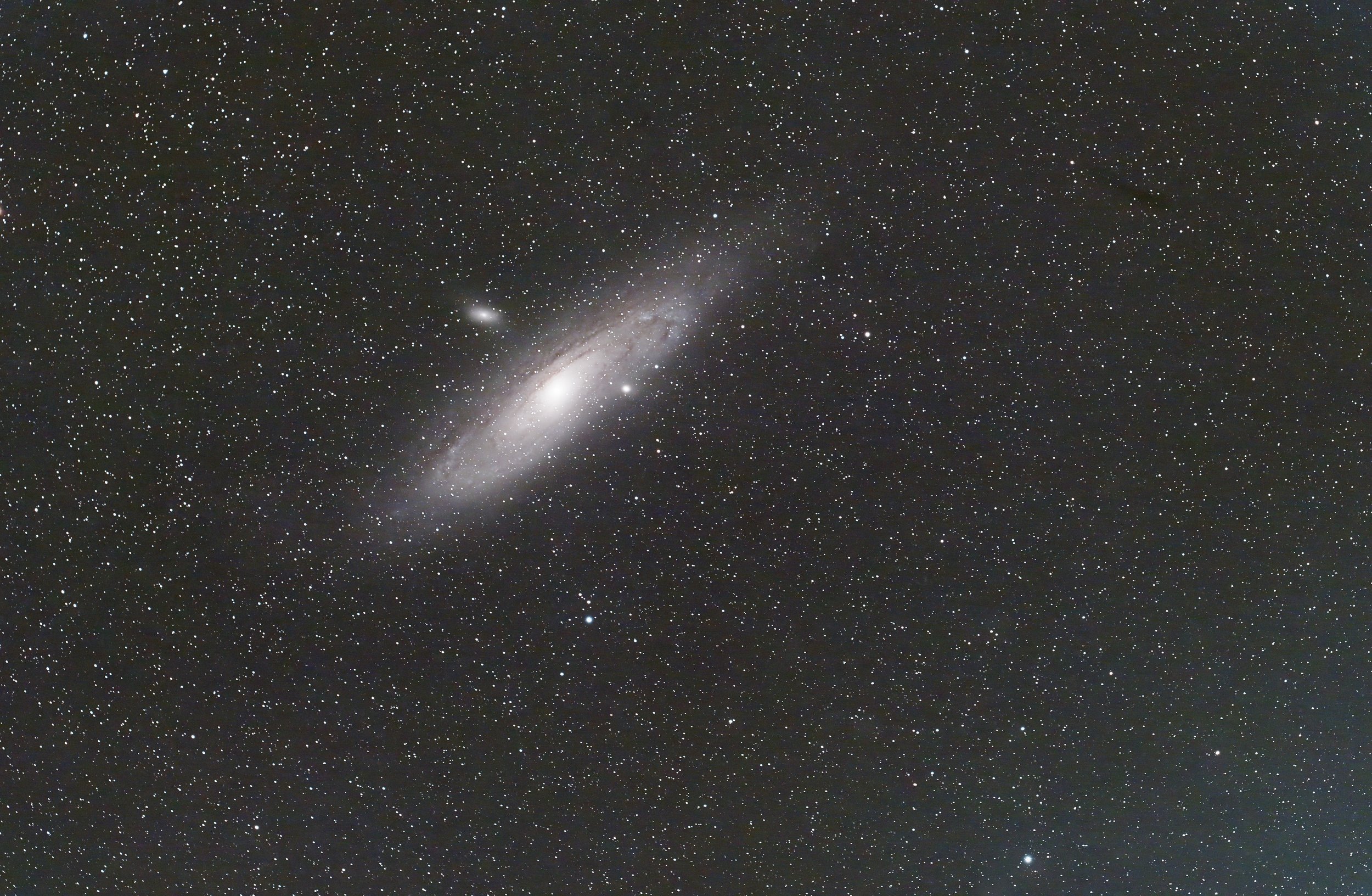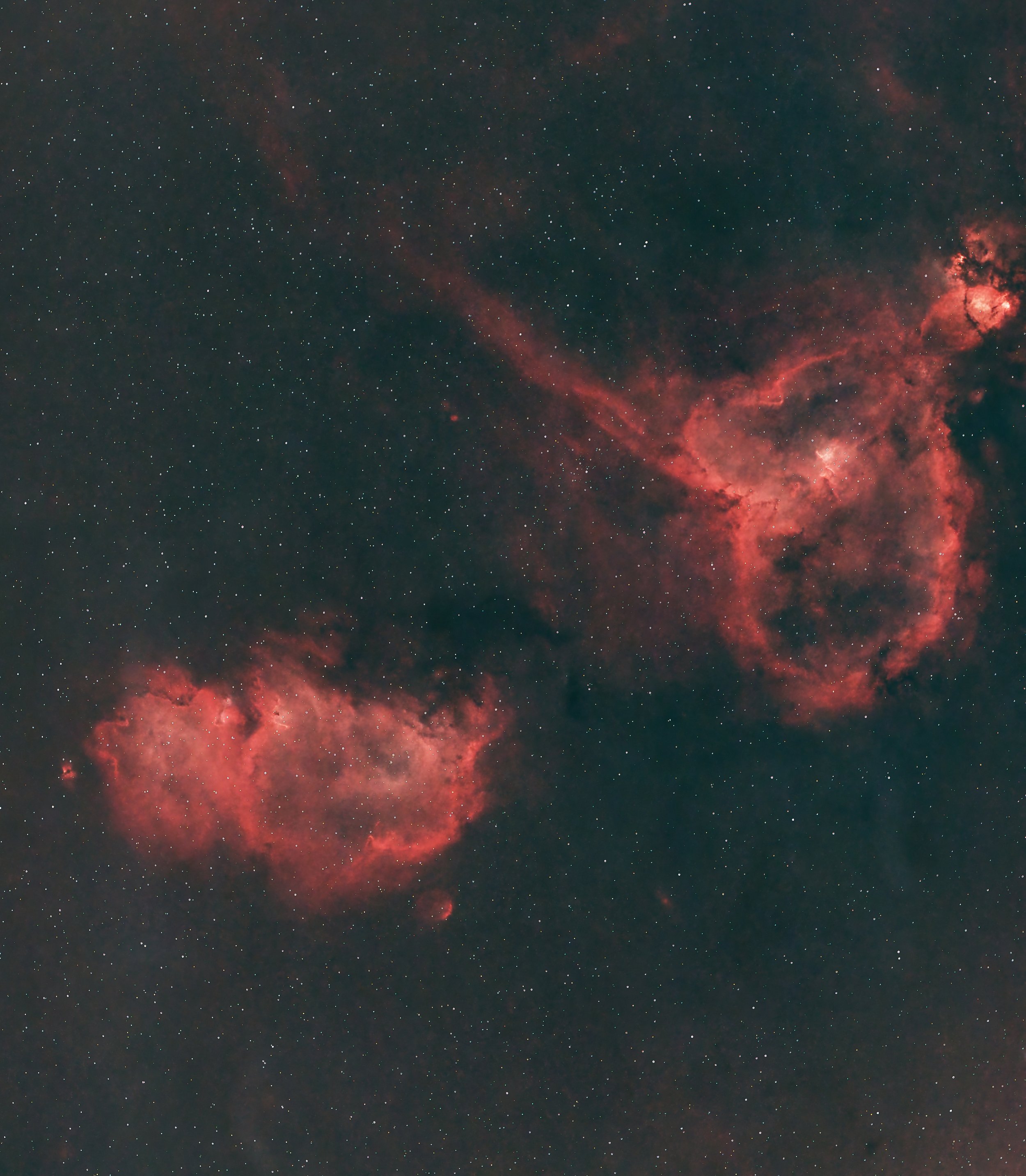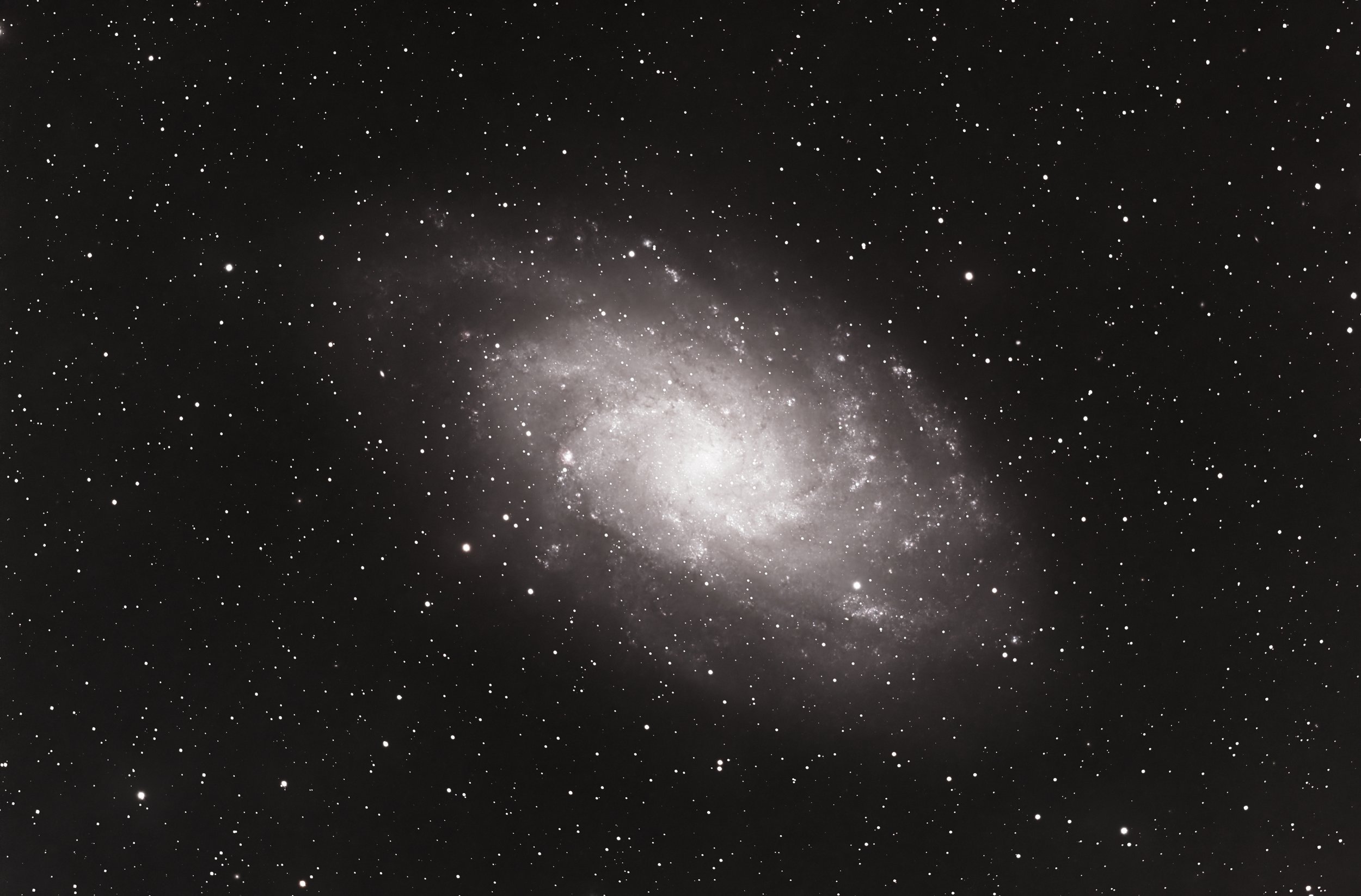31 December 2022
In case you didn’t know, I not only do words and historical linguistics, I’m also an amateur astrophotographer; that is, I take pictures of the night sky. I’ve been doing it, off and on, since 2008, but 2022 is the year that I finally got good at it. This is a compilation of the images I’ve taken during the past year.
I post my images to the Astrophotography section of the Wordorigins website and to Astrobin.com. If you want all the technical details about how I took the images, Astrobin is the place to find them, along with images taken by amateur astrophotographers around the world.
All of these images were taken from my driveway in Princeton, New Jersey, under Bortle 6 (bright suburban) skies.
I started off the year with an image of the:
26 January 2022
An emission nebula in the constellation Monoceros, 5,200 light-years away. This is a false-color image using narrowband filters to cut out light pollution. Emission nebulae consist of ionized gases that emit their own light. The filters cut out all light except that emitted by specific elements. This image uses the “Hubble palette,” assigning light from Hydrogen-ɑ gas to the green channel, from Sulfur-II to the red, and from Oxygen-III to the blue. The color scheme gets its name from its use by scientists using the Hubble space telescope.
This image is a total of 4.17 hours integration time (50 exposures of 5 minutes each), taken with a TeleVue NP127is refractor and a ZWO ASI2600 cooled, monochrome, CMOS camera mounted on my Takahashi EM-200 equatorial mount. I used a set of Baader 6.5-nanometter narrowband filters (H-ɑ, O-III, and S-II). My guide scope was a Sky-Watcher Evoguide 50DX with a ZWO ASI120MM Mini camera (which is the guide scope I’ve used for most of the images here). My capture software running the mount and camera is TheSkyX. Postprocessing used Deep Sky Stacker and Photoshop CC software.
Astrophotography is a challenging hobby. There are three main types of astrophotography: landscape or Milky Way, planetary, and deep-sky. All take practice, use different types of equipment, and require very different techniques. I haven’t done landscape work, which usually combines images of the Milky Way with compelling, earthly foreground objects. It uses a standard camera and tripod, or maybe a star-tracker mount for slightly longer exposures. I do a bit of planetary photography, which I describe below.
But most of what I do is deep-sky work, nebulae, galaxies, and star clusters. Deep-sky photography requires a mount that tracks and counteracts the rotation of the earth, a telescope, and a camera used for long (several minute) exposures that are integrated into a single, final image. Most people ask what telescope I use, but the most important piece of equipment is the mount. Unless you have a mount that accurately counteracts the rotation of the earth, you get blurred images. Also, a second, smaller telescope, camera, and computer are usually required for autoguiding. The second scope and camera focus on a single star and if it moves, send commands to the mount via a computer to correct for that movement. If done right, it results in an image with round, pinpoint stars with no elongation or trailing. And since the target objects are very dim, the images require considerable postprocessing work to reveal all their glory. (But without adding anything; if you see it in the image, it exists in the night sky.)
Here is the mount that I used for most of these 2022 images, a Takahashi EM-200. On it is mounted my TeleVue 127-mm refractor (660-mm focal length), dew heaters, computer, cooled camera, and filter wheel. The smaller telescope and camera mounted on top comprise the autoguider. I also have a 203-mm Ritchey-Chretien telescope (1,624mm focal length) and a 51-mm refractor (250-mm focal length). A long focal length produces magnified images of small objects, while a short focal length gives a wide-field view. I’ve had the Takahashi mount since 2008, and it has been a champ, but I’ve recently retired it in favor of a heavier-duty and more accurate Paramount MYT. More on that toward the end.
5–6 February 2022
The Orion Nebula (M42) is some 1,300 light years away. It is the middle “star” in Orion’s sword. This is one of the most popular deep-sky targets, but it is deceptively challenging. It’s easy to find—you can see it with the naked eye even in very light-polluted skies—but the high dynamic range (combination of faint gases on the outside of the very bright core) make it a tough one to image and process.
This is an exposure of 100 minutes of integration time (20×5-minute). Equipment is as above; except I started using PixInsight software for postprocessing instead of Deep Sky Stacker and Photoshop.
12 & 29 April 2022
Spiral galaxy in Ursa Major, approximately 12 million light-years distant. This is a true-color image, using red, green, and blue filters with monochrome cameras.
This image has 4 hours, 25 minutes of integration time. (55×300sec). This time I used my 203mm TPO Ritchey-Chretien telescope to zoom in on the galaxy. I also used two different cameras for this one: ZWO ASI2600 & 1600 cameras. The 2600 is a superb camera, but a defect in quality control resulted in many of them suffering from oil leaking onto the sensor. My camera was out of commission for a while until I acquired the proper cleaning supplies. The problem kept recurring, and at the end of the year ZWO agreed to replace it. Hence, I reverted to my older ASI1600 for this and other images. Such is this hobby; seldom does everything work perfectly at the same time. That’s what keeps you on your toes.
10 & 11 May 2022
Spiral galaxy in Canes Venatici, approximately 31 million light-years distant, and its companion NGC 5195, with which it is interacting.
Integration time of 7.5 hours (90x300sec). Again, using my Ritchey-Chretien telescope.
4, 5, & 9 June 2022
Emission nebulae in Cygnus. This is a wide-field image, taken with my William Optics Redcat 51 refractor telescope, focal length of 250mm for a wide-field view, and my ASI2600 camera. This is another narrowband image using the Hubble palette. But for this one (and all the ones going forward), I used a new set of narrowband filters, Antlia 3.5-nanometer H-ɑ, OIII, and SII filters.
14 June 2022.
A supernova remnant in Cygnus, some 2,400 light years distant.
3 hours, 45 minutes integration time. Again, using the Redcat 51, ASI2600, and narrowband filters.
EAGLE NEBULA (M16)
24, 25, 30 June, 3, 10, 14 July 2022
An open cluster with star-forming nebulae in the constellation of Serpens, some 5,700 light-years distant
This was my longest integration time to date, a total of 22 hours, 52 minutes, 30 seconds integration time, using 450-second exposures of H-alpha, Oxygen III, and Sulfur II. This time I went back to my TeleVue NP127is refractor, which gives me a medium field of view between that of the Ritchey-Chretien and the Redcat 51.
Here is a detail of the above image, showing the “Pillars of Creation,” a star-forming region, in close-up.
19–22 July 2022
Emission nebula surrounding the star Sadr (Gamma Cygni) in the constellation Cygnus. Another mega-integration time: 25 hours, 37 minutes, 30 seconds; 450-second exposures of H-alpha, Oxygen III, and Sulfur II. Equipment as above.
3 August 2022
A starless take on the nebula in the constellation Cepheus, about 2,400 light years distant. I’d been trying to get the backfocus right on my telescope. Backfocus is the distance between the last optical element in the imaging train and the camera’s sensor, and if it’s not right, the stars at the edges can appear misshapen. So, this is an image with the stars removed. It has the advantage of making the nebulosity more prominent. It’s common to remove the stars during postprocessing in order to work on the nebulosity, but usually you add the stars back.
Total of 6 hours, 37 minutes, 30 seconds integration time; 450-second exposures of H-alpha, O-III, and S-II. Equipment as above.
8 September 2022
My first serious attempt to image a planet. Planetary imaging is a very different beast, using a technique called lucky imaging. Atmospheric distortions wreak havoc on planetary images; deep-sky targets are much more forgiving in this respect. To combat this, one takes a video—thousands of frames—and combines only those “lucky” few that happen to be clear into the final image. I’m still learning.
This one used my Ritchey-Chretien scope and a ZWO ASI290MM camera, with infrared, red, green, and blue filters. I used the infrared frames as a luminance channel. Postprocessing was with Autostakkert and RegiStax software.
8 September 2022
Saturn on the same night as Jupiter with the same equipment, only I also used WinJupos software in postprocessing. This one came out much better.
15 September 2022
Widefield shot of the nearest major spiral galaxy, 2.5 million light years distant. Andromeda is massive, taking up about 3 degrees in the night sky—that’s 6 full moons across, but so faint that you only see the bright core with the naked eye, if light pollution permits even that.
This one was taken with my portable rig: my Redcat 51 refractor and Canon D6 Mark II (modified) DSLR camera, mounted on a Sky-Watcher StarAdventurer GTi star tracker. The camera is modified to extend the spectrum it captures deeper into the red so it can capture Hydrogen-ɑ emissions. I also used an Optolong L-Pro light-pollution filter.
Total of 1 hour, 9 minutes integration time (23×180-second exposures)
23 September 2022
Also called the Eye of Sauron, this is a planetary nebula some 650 light-years distant in the constellation Aquarius. Planetary nebula is a misnomer, dating to the eighteenth century when astronomers thought these objects resembled planets. They are formed by dying stars sloughing off gases.
For this one I used a cooled, color, astronomy camera, a QHY183C, my Optolong L-Pro light-pollution filter, and my TeleVue NP127is refractor. Integration time was 3 hours (36×300 seconds).
23 September 2022
Emission nebulae in Cassiopeia, some 7,500 light-years distant.
I ran two different imaging rigs this night. This second one was taken with my portable rig, using an Optolong L-Pro filter. 5 hours, 56 minutes, and 16 seconds of integration time (167×128 seconds).
27 September 2022
This is the third spiral galaxy in our local group, the others being Andromeda and our own Milky Way. At 2.73 million light-years, it's the most distant object that can be seen with the naked eye.
Total of 8 hours, 20 minutes integration time (100×300 seconds) with LRGB filters, using my TeleVue NP127is refractor and ASI2600 camera.
8–11 October 2022
Emission nebulae in Cassiopeia, some 7,100 to 11,000 light-years distant
Total of 26 hours, 45 minutes integration time, 214×450-second exposures of Hydrogen-α, Oxygen-III, and Sulfur-II, using my TeleVue NP127is refractor and ASI2600 camera.
Here is a detail of the above image showing the “bubble.”
LUNAR ECLIPSE
8 November 2022
Composite of images from the first half of the eclipse. I didn't get the second half because of sunrise. For this one, I just used a tripod, my Canon 6D Mark II with my Redcat 51 telescope as the lens, and a 4× Barlow lens for magnification. Various exposure times at ISO 1600.
4 December 2022
Dark and emission nebulae in Orion; the bright star is Alnitak, the leftmost star in Orion’s belt. Total of 6 hours, 30 minutes integration time, 39×10-minute exposures of Hydrogen-α, Oxygen III, and Sulfur II.
This image was also processed using Russell Croman’s BlurXterminator tool, which is an AI program that conducts deconvolution, sharpening stars and nebulae. Deconvolution is a laborious and painstaking process that is difficult to get right. This tool makes it simple. I expect it will improve my images no end going forward.
This image is also the first light using my new mount, a Paramount MYT equatorial mount. Here is my Paramount with my TeleVue refractor mounted on it. The red camera at the end is the ASI2600, which is attached to a filter wheel that holds the various filters I use. The red box on top is the SkyX Fusion computer that runs the rig. Since this picture was taken, I’ve added a Moonlite Nitecrawler electronic focuser, which keeps the telescope in focus as conditions change throughout the night.
9 December 2022
Emission nebula in Perseus, some 1,000 light-years distant. Some people think this nebula resembles a map of California, hence the name; I don’t see it, but to each their own. A total of 9 hours integration time, 27×20-min exposures of Hydrogen-α, Oxygen III, and Sulfur II. This one used my Redcat 51 on the Paramount MYT, and my ASI1600 camera (my 2600 having been sent back for replacement due to the dreaded oil leak problem).
Amazingly, the Paramount managed 20-minute exposures with no star trailing and did this without the help of a second guide scope. The Redcat has a wide field of view, which is more forgiving, but even so, this is amazing performance in a mount. I can’t wait to see what this mount allows me to do in 2023.
12–13 December 2022
My final image of the year: the emission nebula in Cassiopeia which I had previously imaged above alongside its companion, the Heart Nebula. A total of 17 hours integration time, 51×20-min exposures of Hydrogen-α, Oxygen III, and Sulfur II, using the Redcat 51 and ASI1600 camera. Again, no guide scope or camera.
I’m looking forward to what 2023 will bring, and I’m wishing you all the best for the new year.


